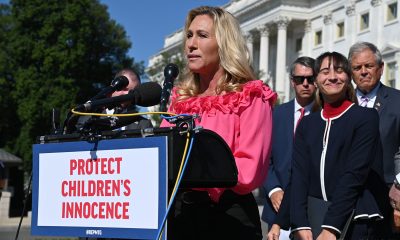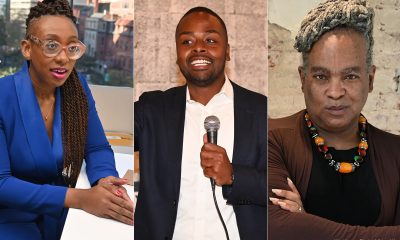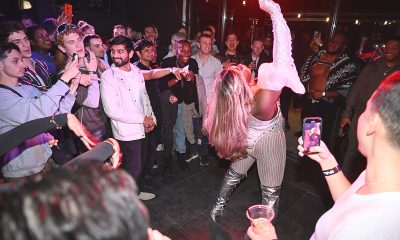Sports
U.S. professional sports called the ‘last closet’
40 years after Stonewall, no ‘out’ player in major league baseball, football, hockey

Brittney Griner, seen here accepting the Wade Trophy, came out as a lesbian but didn’t receive a lot of media attention, even though she is recognized as the best woman basketball player to enter the WNBA draft in 2013. (Photo by Sphilbrick; courtesy Wikimedia Commons)
LGBT sports enthusiasts were thrilled earlier this year when professional basketball player Jason Collins and pro soccer player Robbie Rogers came out as gay, becoming the first two out gay men to emerge as current players in the professional leagues for the two sports.
Around the same time, Brittney Griner, the top-rated 2013 college basketball player in the Women’s National Basketball Association (WNBA) draft, came out as a lesbian. Her coming out made no difference to the Phoenix Mercury WNBA team, which quickly signed her on as a player.
The decision by Collins, Rogers, and Griner to disclose their sexual orientation followed coming out stories last year of another women’s pro basketball player, Seimone Augustus, and a women’s pro soccer player, Megan Rapinoe.
FIND MORE OF THE WASHINGTON BLADE SPORTS ISSUE HERE.
While these developments are viewed as encouraging signs by LGBT sports fans and activists, they come at a time when no open gays have ever emerged as players in three of the nation’s most popular professional sports — baseball, football and ice hockey. And though the NBA’s Collins came out four months ago, he remains a free agent.
No male professional golfer has ever come out as gay anywhere in the world and just one pro tennis player who is male has ever come out, according to Cyd Zeigler, editor and publisher of OutSports, a widely read online publication covering LGBT people in sports.
“People call it the last closet. And I think that’s what it is,” Zeigler told the Blade in discussing the lack of LGBT people in professional sports. “I think homophobia for decades has been more entrenched in sports than it has in most other areas in our culture,” he said.
“It starts when these kids are young. And they’re five years old and 10 years old and playing sports and the coach calls them a faggot and tells them not to be a sissy and this idea that being a faggot is less than being a man,” he said. “It starts there.”
Zeigler and other experts in the field of gays in sports say they are optimistic that cultural and political changes that opened the way for LGBT rights advances in recent years, including the approval of same-sex marriage in a growing number of states, will soon spill over into the realm of professional sports.
Forty-three years after the Stonewall riots in New York sparked the modern LGBT rights movement, LGBT activists say they are hopeful that baseball, football and hockey along with other professional sports will soon join the ranks of other professions in becoming more welcoming for LGBT people.
Zeigler said nearly all professional sports leagues have policies that ban discrimination based on sexual orientation along with other categories such as race, religion and ethnicity.
Earlier this year, at the request of New York State Attorney General Eric Schneiderman, the National Football League and Major League Baseball agreed to strengthen their non-discrimination policies pertaining to sexual orientation.
In a statement released in April, Schneiderman said he pushed for the strengthened policies after his office learned of complaints by at least three prospective NFL players that they were asked questions about their sexual orientation at the league’s recruitment scouting meeting held in February in Indianapolis.
“According to one prospective player, representatives of NFL teams asked prospects if they had a girlfriend, were married, or liked girls,” a statement released in April by Schneiderman’s office says.
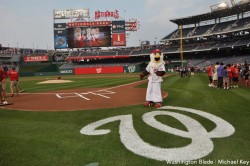
The NFL and Major League Baseball adopted non-discrimination policies on sexual orientation in 2011 as part of collective bargaining agreements with the NFL and MLB and their respective player’s associations. (Washington Blade photo by Michael Key)
The statement and a follow-up statement released in July says both the NFL and Major League Baseball adopted their initial non-discrimination policies on sexual orientation in 2011 as part of collective bargaining agreements with the NFL and MLB and their respective player’s associations, which act as player unions.
The statements say that in response to Schneiderman’s request, the NFL and MLB agreed to adopt a workplace code of conduct specifically addressing sexual orientation discrimination and to post the policy document in all team locker rooms among other places.
“Both on the field and away from it, Major League Baseball has a zero-tolerance policy for harassment and discrimination based on sexual orientation,” MLB Commissioner Bud Selig said in a statement related to the code of conduct document.
It couldn’t immediately be determined whether the new non-discrimination policies would encourage gay baseball or football players to come out. But experts familiar with LGBT people in sports say factors other than homophobia and anti-LGBT bias may be playing a role in discouraging LGBT people from coming out in professional sports.
“I think the athletes themselves are ready to have an openly gay teammate,” said Patricia Griffin, Professor Emerita in Social Justice Education at the University of Massachusetts in Amherst.
Griffin, a former swimming coach and author of the book “Strong Women, Deep Closets: Lesbians and Homophobia in Sports,” told the Blade that concern over media attention may be keeping some LGBT athletes from coming out.
“I think one of the things that keeps athletes in the closet is not necessarily that they’re afraid of the homophobia of their teammates, but that it’s still such a news story, especially for the men,” Griffin said. “You have to be prepared to deal with all of the media attention. And I think there are a lot of gay athletes and that’s not what they want to do,” she said.
“They would like to be out. They want to be out. But they don’t want to have to deal with the attending media crush as well as probably requests from every gay organization in the world to be a spokesperson and so on,” she said.
Zeigler said he, too, believes reasons other than anti-LGBT bias have prompted many LGBT athletes in professional sports to stay in the closet. He noted that in the NFL, the average career often ends after three and a half years. The average baseball and hockey career is likely to be longer, but most players are ready for retirement by their late 30s, he said
“These guys from high school are working essentially full-time jobs and going to school,” he said. “And a lot of them say they don’t have time to explore their sexual orientation. Their idea of coming out in the middle of the pressure of trying to make a college squad, trying to get playing time, trying to make an NFL squad, trying to get a good contract” is not something that appeals to them, he said.
“So coming out is a complication, an unnecessary complication for some of them,” said Zeigler.
Robert McGarry, senior director of education and youth programs for the Gay, Lesbian & Straight Education Network (GLSEN), said his organization is working with public schools and teachers, including physical education teachers, to curtail anti-LGBT bias among youth.
“What you see at the pro level really starts in kindergarten and on the playground on recess time,” McGarry said. “The kind of exclusion of kids who step outside of what society expects of their gender fuels that. What fuels it also is educators not addressing anti-LGBT language and bias.”
He said GLSEN retained Patricia Griffin to develop a GLSEN sports project called Changing the Game, which is designed to address homophobia and trans phobia in school sports programs from kindergarten to the 12th grade.
“We’ve been doing training across the country with mostly high school coaches and physical education teachers who seem very receptive and anxious to have this kind of training because it’s not something that they get in their preparation and they don’t really know what to do,” he said. “So we’re trying to fill that gap.”
Griffin said educational programs like GLSEN’s sports project and the changing attitudes throughout the country on LGBT equality will soon lead to more openly LGBT professional sports players, including players in the NFL and MLB.
“I think one of these days there’s going to be a quarterback from some college football team, Division 1, who gets recruited up high in the draft and he’s going to come in to the NFL as an out gay man,” Griffin said. “I actually think that’s more likely to happen than having an established star come out after he’s been playing for a while.”
Added Griffin, “They never knew what it was like to be ‘in,’” she said of the up and coming young athletes. “They are out and that’s how they live their lives. That alone is going to change the face of sports in the next few years.”
McGarry of GLSEN cautioned that although it will help the cause of LGBT people in sports if more big name stars come out, that alone won’t address the underlying cause of homophobia in sports.
“It’s a shame that everybody is sort of waiting for the first NFL player to come out,” he said. “There are many people who think that’s going to be the great solution – to have a football player come out of the closet. I think there’s a lot more work to be done.”
D.C. Police Sgt. Brett Parson, the gay former head of the department’s Gay & Lesbian Liaison Unit, is a longtime amateur ice hockey player and former referee with the National Hockey League who says he witnessed firsthand the culture of professional hockey players.
“While we’ve come a long way, football, basketball, baseball, ice hockey – those sports still have the machismo that inhibits people from coming out and disclosing they’re gay for fear of being ostracized,” Parson said.
“I think we’re maybe not a generation away but we’re still a few years away before more people feel comfortable doing that,” he said.
Griffin said more women’s professional athletes have already come out than male professional athletes, but this often goes unnoticed because historically the public and the sports media pay more attention to men in sports.
She noted that Brittney Griner didn’t receive a lot of media attention when she came out this year, even though she is recognized as the best woman basketball player to enter the WNBA draft in 2013.
“Part of that is because it’s sort of like a weird kind of sexism, where we always think men’s sports are more important and we pay more attention to men’s sports,” she said. “So it makes sense that if a gay man comes out in men’s sports we pay more attention.”
According to Griffin, the less-noticed coming out by Griner may be the better path for all LGBT athletes going forward.
“With women it’s not such a surprise because people assume that there are lesbians in sports,” she said. “But when she came out it wasn’t like a giant announcement. She was just very matter of fact. It’s who I am. I’m proud of who I am and, you know, let’s move on,” said Griffin.
“And I think that’s going to be the future of more athletes who come out rather than having this be this giant, traumatic announcement that they make and feel like they’re risking their career by coming out,” she said.
Egypt
Iran, Egypt object to playing in Seattle World Cup ‘Pride Match’
Game to take place on June 26
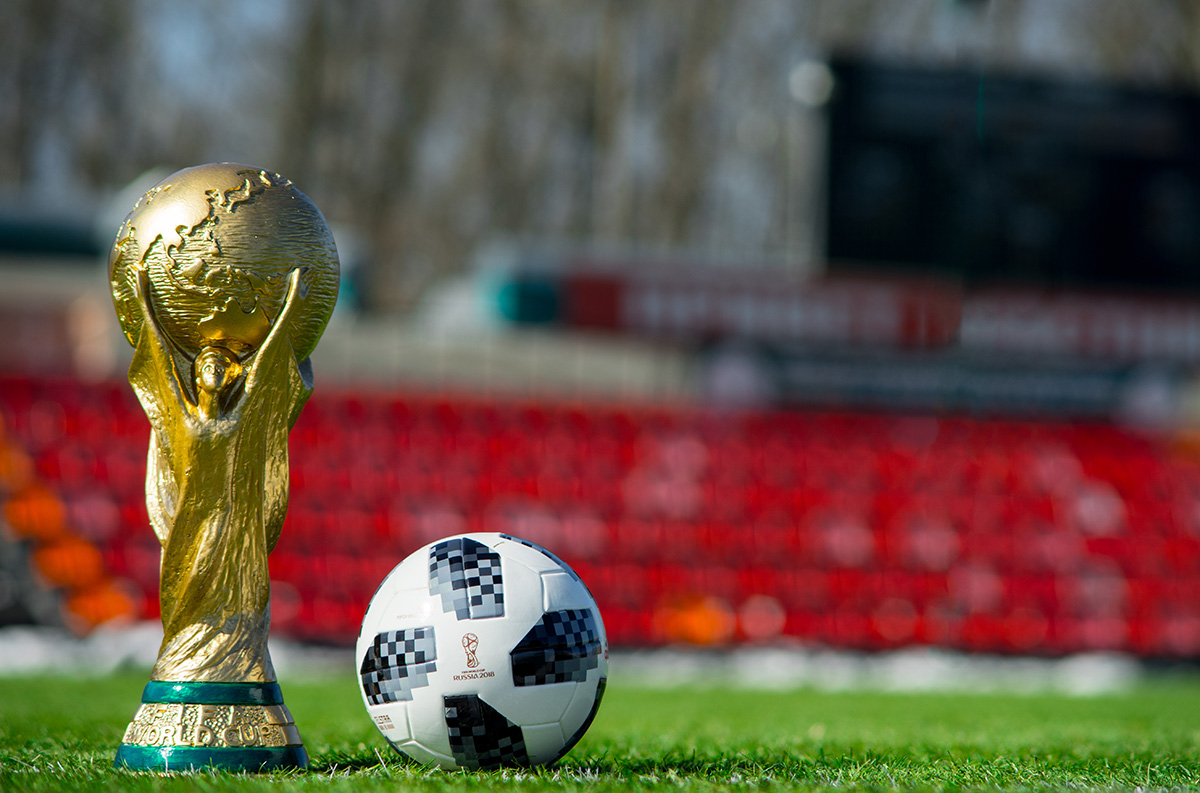
Iran and Egypt have objected to playing in a “Pride Match” that will take place in Seattle during the 2026 World Cup.
The Egyptian Football Association on Tuesday said it told FIFA Secretary General Mattias Grafström in a letter that “it categorically rejects holding any activities related to supporting (homosexuality) during the match between the Egyptian national team and Iran, scheduled to be held in Seattle, USA, on June 26, 2026, in the third round of the group stage of the 2026 World Cup.” Football Federation Islamic Republic of Iran President Mehdi Taj told ISNA, a semi-official Iranian news agency that both his country and Egypt “protested this issue.”
The 2026 World Cup will take place in the U.S., Canada, and Mexico. The draw took place at the Kennedy Center on Dec. 5.
Iran is among the handful of countries in which consensual same-sex sexual relations remain punishable by death.
The State Department’s 2023 human rights report notes that while Egyptian law “did not explicitly criminalize consensual same-sex sexual activity, authorities regularly arrested and prosecuted LGBTQI+ persons on charges including ‘debauchery,’ prostitution, and ‘violating family values.’” Egyptian authorities “also reportedly prosecuted LGBTQI+ individuals for ‘misuse of social media.’”
“This resulted in de facto criminalization of same-sex conduct and identity,” notes the report.
The 2024 human rights report the State Department released earlier this year did not include LGBTQ-specific references.
Soccer has ‘unique power to unite people across borders, cultures, and beliefs’
The June 26 match between Iran and Egypt coincides with Seattle Pride. The Washington Post reported the Seattle FIFA World Cup 2026 Local Organizing Committee decided to hold the “Pride Match” before last week’s draw.
“As the Local Organizing Committee, SeattleFWC26’s role is to prepare our city to host the matches and manage the city experience outside of Seattle Stadium,” said SeattleFWC26 Vice President of Communications Hana Tadesse in a statement the committee sent to the Washington Blade on Wednesday. “SeattleFWC26 is moving forward as planned with our community programming outside the stadium during Pride weekend and throughout the tournament, partnering with LGBTQ+ leaders, artists, and business owners to elevate existing Pride celebrations across Washington.”
“Football has a unique power to unite people across borders, cultures, and beliefs,” added Tadeese. “The Pacific Northwest is home to one of the nation’s largest Iranian-American communities, a thriving Egyptian diaspora, and rich communities representing all nations we’re hosting in Seattle. We’re committed to ensuring all residents and visitors experience the warmth, respect, and dignity that defines our region.”
The 2034 World Cup will take place in Saudi Arabia.
Consensual same-sex sexual relations remain punishable by death in the country. The 2022 World Cup took place in neighboring Qatar, despite concerns over the country’s anti-LGBTQ rights record.
Sports
Gay speedskater racing toward a more inclusive future in sports
Conor McDermott-Mostowy says anti-DEI push is driving away corporate sponsors
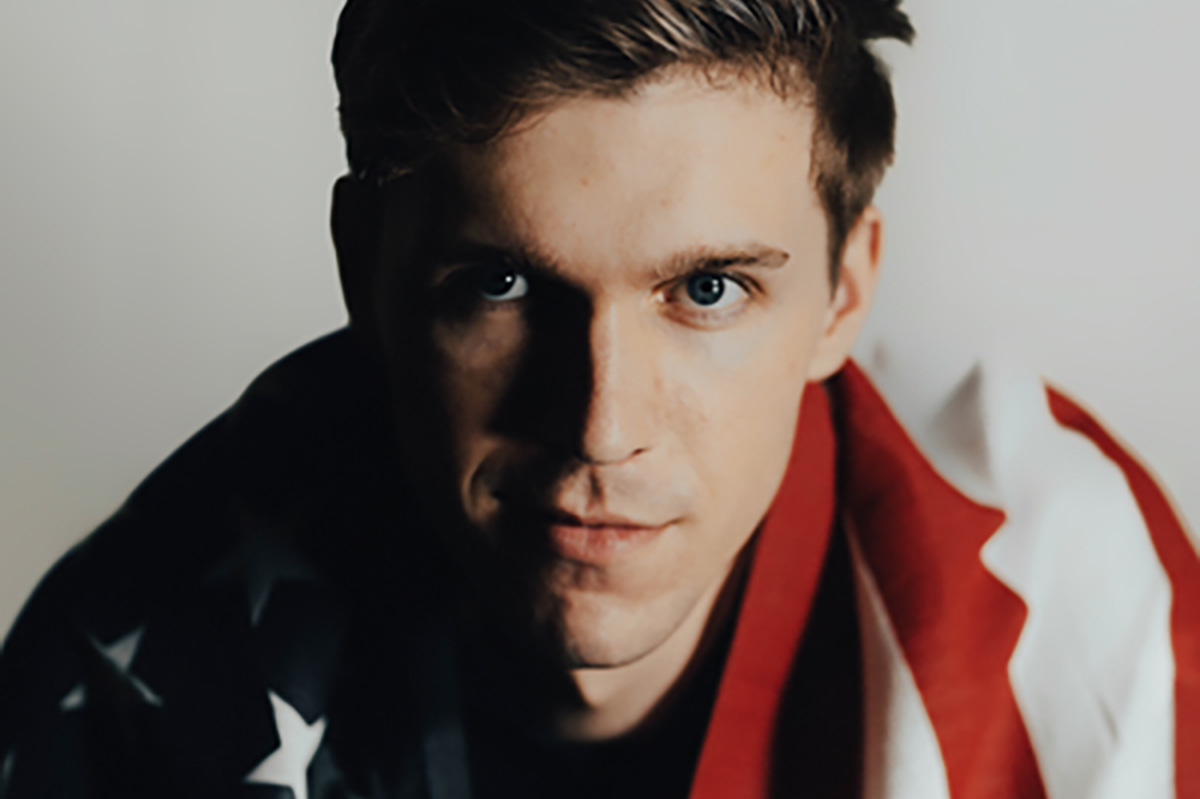
LOS ANGELES — As the countdown begins to the February Winter Olympic Games in Milan, Pride House LA is shining a spotlight on queer athletes who are breaking boundaries both on and off the field. Among them is Team USA speedskater Conor McDermott-Mostowy – a fierce competitor and proud member of the queer community. With blistering speed on the ice and a steadfast commitment to equity in sports, Conor is doing so much more than winning medals – he’s redefining what it means to represent one’s country while representing one’s community.
McDermott-Mostowy is one step closer to the 2026 Winter Olympics after winning the recent silver and bronze medals at the U.S. Championships in speedskating. He appeared at a Nov. 1 event presented by Out Athlete Fund/Pride House LA in the organization’s efforts to raise funds to support Conor and other out athletes as they pursue their Olympic dreams in Milan 2026 and beyond.The Blade spoke to the star athlete to talk about resilience, representation, and the legacy he hopes to leave one day.
Blade: Huge congrats, Conor! Winning a World Cup gold is no small feat. Do you feel like this win proved something to the world – or more importantly, to yourself?
McDermott-Mostowy: Winning gold with my team last year was definitely a major goal achieved. That said, the event we won isn’t yet an Olympic event. The races that have had the most profound impact on me actually happened two years ago.
The first was the team pursuit in Obihiro, Japan. I’d always been more of an alternate for that event, since it’s typically raced by skaters who compete in both the 1500m and 5000m. But I’d been itching for the opportunity to race it at the World Cup level. I finally got that chance when a teammate had to pull out at the last minute due to a back issue. We led the race through six of eight laps, ultimately finishing third. While it was a little disappointing to fall out of the lead, I was proud to prove that I could contribute meaningfully and help the team medal.
The second race was later that year in Salt Lake City, my home ice. After competing in Japan, I came down with a lung infection that affected my performance at the next few World Cups. Fortunately, I had time to recover before the North American World Cups and World Championships. At the Salt Lake City World Cup, I was balancing competition with completing my undergraduate degree. I didn’t know what to expect, but I ended up finishing fifth in the 1000m—my highest individual finish ever—and posted a time of 1:06.91. That’s a very significant time in speedskating; only three other Americans have gone under 1:07 in that event, all of whom became world champions. That result felt like a turning point, showing me that an Olympic or World Championship medal wasn’t just a dream—it was within reach.
Blade: This PrideHouse LA event is a huge moment. What does that support from the queer community mean to you?
McDermott-Mostowy: It’s incredibly meaningful. Being queer in Olympic sport can be very isolating, both inside and outside the sport. I barely have time to socialize outside of skating, and relocating to Salt Lake City doesn’t exactly help when it comes to queer community. So having that kind of solidarity and support from the wider LGBTQ+ community really means a lot.
Blade: Do you remember the moment you realized skating could take you all the way to the Olympics?
McDermott-Mostowy: There hasn’t been one single moment. It’s been a series of them. Over the years, I’ve had many races that shattered the limits I thought I had and inspired me to reach higher. That Salt Lake City race was one of them. It made me realize I shouldn’t just aim for the Olympics. I should aim for medals.
Another key moment came in 2018 at my last Junior World Cup, when my teammate and I finished 2nd and 3rd in the mass start. That event is similar to short track but held on a long track. It was my first full year focusing on long track after previously dabbling in it, and we had no expectation of medaling. But after we did, I realized I might actually have a future in this discipline—and that I could be competitive on the world stage. It was a pivotal realization, especially as I was trying to decide whether to continue skating or pursue a traditional college experience.
Blade: What initially drew you to speedskating? How did you get into the sport—and what’s kept you motivated?
McDermott-Mostowy: I grew up on skates. I started at age two and became a strong skater early on. But I never had any interest in hockey or figure skating. One winter, I was skating with my family on the C&O Canal in Washington, D.C., when a guy skated past us on these wild-looking speed skates. I was immediately intrigued. My parents found a local club, which happened to be run by three-time Olympian Nathaniel Mills, and I was hooked.
What’s kept me going is simple: I love it. This isn’t a sport you get rich in. I’ve only earned more than $20,000 a year twice in my career, and you can’t use it to pay for college either. The motivation has to come from within—the pursuit of excellence, the dream of going to the Olympics, and pure love for the sport.
Blade: What’s been your toughest race to date, and what did it teach you?
McDermott-Mostowy: That would be the team pursuit in Japan. I wasn’t expecting to race it and had already competed in a full weekend of events before getting the call. Team pursuit is arguably the toughest event in speedskating. Stepping up without being mentally or physically prepared was a challenge, but I did it. It showed me I could push through, even under extreme circumstances.
Blade: You’ve made headlines not just for your speed, but for your openness. What was it like coming out publicly in the world of elite sport?
McDermott-Mostowy: By the time I was publicly identified as gay, I had already been out to anyone who asked. So “coming out” doesn’t feel like the right term. It wasn’t a big declaration. I had the benefit of growing up seeing openly gay athletes and being part of a supportive community. I never felt the need to hide who I was.
Eventually, as I started achieving more on the ice, people began noticing me and the content I posted, and they put two and two together. When I was asked to speak publicly about being an openly gay athlete in speedskating, I didn’t hesitate.
Blade: What have been the biggest challenges in your career – physically, mentally, or otherwise?
McDermott-Mostowy: Honestly, my entire career has been about overcoming challenges. The two biggest obstacles have been illness and finances.
I’ve dealt with asthma, a norovirus that derailed my chances in 2022, and a fatigue condition last season that affected my performance. These setbacks take a toll. Not just physically, but mentally. When you invest everything into your sport, being forced to pause or scale back is a huge emotional hurdle.
Financially, speedskating is a tough path. Even as a consistent top-20 skater in the world, I’ve only broken $20k twice in a year, and we’re paid for just nine months, even though we train year-round. I’ve leaned on friends and family for support many times just to make ends meet.
Blade: Have you ever been told – explicitly or implicitly – that being openly gay could hurt your chances with sponsors or coaches?
McDermott-Mostowy: Never with coaches. In our sport, selections are based on the clock, not someone’s opinion. My coaches have always been great.
But when it comes to sponsorships, especially over the past year, I’ve noticed a shift. As anti-DEI sentiment grows, brands are backing away from anything that could be seen as “controversial.” Being openly gay seems to fall into that category now. Since most of our income comes from sponsorships, that retreat is deeply felt.
Sports
Trans cyclist’s victory sparks outrage in conservative media
Katheryn Phillips is originally from DC
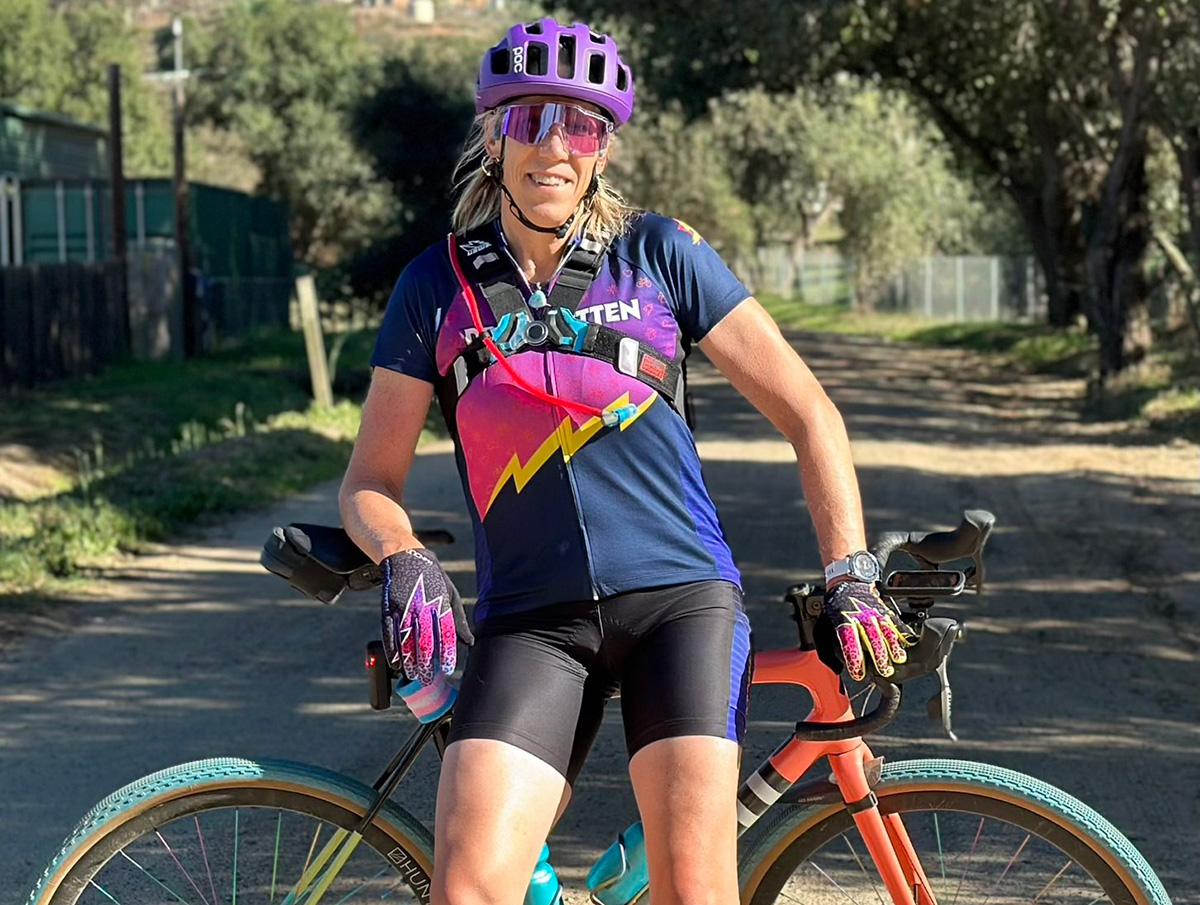
On the heels of UPenn erasing the record of the first openly transgender NCAA Division I All-American swimmer and the U.S. Supreme Court’s decision to tackle bans on trans student-athletes, right wing media is now all hot and bothered about the latest trans woman who won a cycling championship — even though she competed according to the rules.
On Tuesday, 58-year-old Katheryn Phillips finished first in USA Cycling’s Lyons Masters National Championship race for women aged 55-59, with a time of 1:42:10, according to the official results posted by the organization. The record shows her gender as “F” for female.
One second behind Phillips was Julie Peterson, with a time of 1:42:11 — as were three other cyclists: Mary Beth Grier, Andrea Cherniak-Tyson, and Carolyn Maddox.
Peterson, 57, was so outraged, she told Fox News she refused to stand on the podium in second place next to Phillips. Her story was swiftly shared by the New York Post (also owned by Fox’s parent company News Corp.), the Daily Mail, Breitbart, and other conservative media.
Both Peterson and another competitor are accusing USA Cycling of “hiding” that a transgender woman had registered to race.
“It was hidden from us. Katheryn Phillips, KJ’s name, was not on that list. And I checked it up all the way to the point of closure when we couldn’t register online anymore,” Debbie Milne told Fox.
“If I had known, I wouldn’t have spent thousands of dollars in travel and time off work to come and do a race,” Peterson said. Fox welcomed Milne, 56, who finished seventh on Tuesday, to Fox & Friends Thursday morning.
(Video courtesy of Fox News)
Peterson told Fox she did complain to USA Cycling officials prior to the race. Both Milne and Peterson referred to Phillips as a male, and with “he/him” pronouns.
“To be fair to all humans, if we want to say ‘him’ or ‘her,’ he was born a biological male, that is a fact,” Milne said. “And that is the thing that makes it an unfair advantage. Whatever has happened after that is a whole different topic.”
“I said, ‘I don’t want to race against a man,’ and they quickly scolded me and said ‘Oh, you can’t call him a man,’ and I’m like ‘Well, he is a man,’ so I was quickly scolded and corrected that it is a woman and I don’t even know what to say.”
USA Cycling did not respond to the Washington Blade’s emails requesting comment.
Phillips, who goes by Kate and by “KJ,” is a former rugby player with the D.C. Furies, who stated in the comments of a 2024 article published by Zwift Insider that she was the first out trans athlete in the U.S. to compete under the 2004 International Olympic Committee’s guidelines on trans participation.
“When USA Rugby told me about the IOC decision in 2004, I raised my hand to be included. I experience nothing but joy when I play, ride, and race,” Phillips said.
As the Blade has reported, the International Olympic Committee drastically revised those rules in 2021, and in March, Republican lawmakers in D.C. demanded the IOC ban trans female athletes from women’s sporting events altogether.
The Blade also reached out to Phillips for comment but as of press time we have not received a response. She told Zwift Insider in March 2024 she does not let those who disapprove or spread hate impact her performance or her attitude.
“I am unaffected by dissent. I love, I share joy, I am me, and I have been my authentic self for decades,” she said. It’s been reported Phillips came out in 1999, and told Zwift Insider she considers herself a lifelong cyclist.
“I’ve been on a bike for as long as I can remember,” said Phillips. “As kids, my friends and I rode all over town, we were feral kids; no cell phones, no trackers … we just roamed, and nobody got in trouble or hurt bad enough not to ride home … Scrapes/bruises/cuts were not an issue for us. In my teens, I worked for myself as a court/legal messenger, doing all of the work via my bike until I got a car. Raced BMX as a kiddo (when I mowed lawns to cover the race entry fees), I did MTB stuff (non-racing) and Sprint/Olympic Triathlons in my 30’s, and now I’m racing on Zwift, Road/Gravel, and CX in my 50s.”
In the comments section, Phillips made clear she’s not competing to win.
“I don’t do sports for victory, I do it because like many other women, I am an athlete to my core,” she said. “Unlike some, I am not there to WIN, I am there to do my best with the competitors and teammates I have around me trying to do the same…we are in it for the experience. I rejoice in their wins, and a lot of joy is reflected back to me when I have a good day.”



